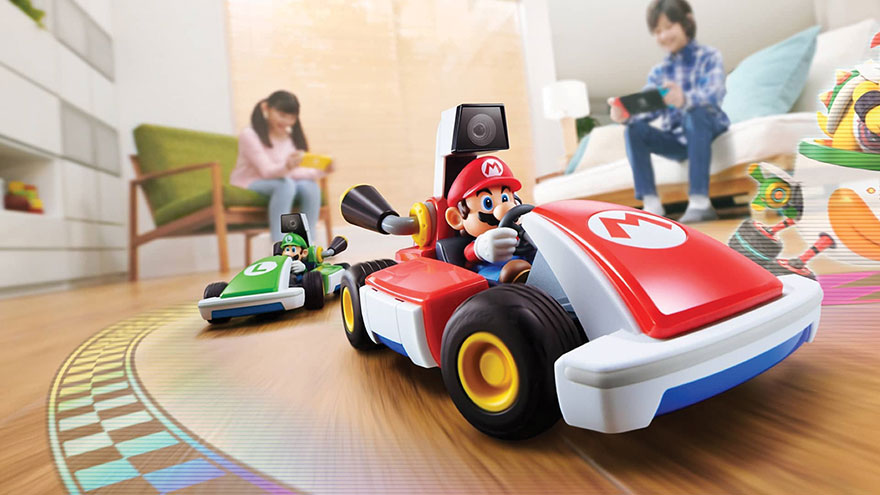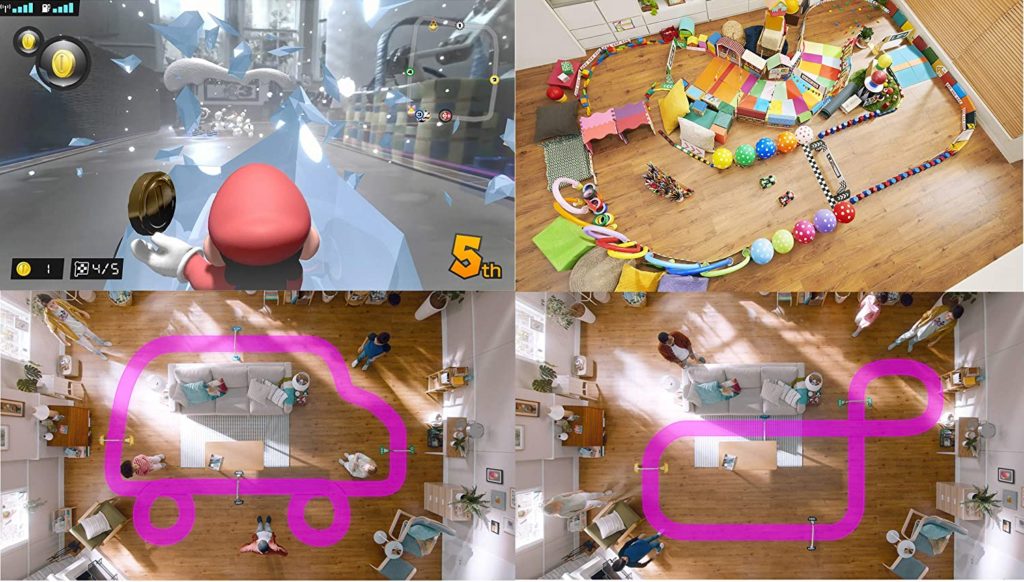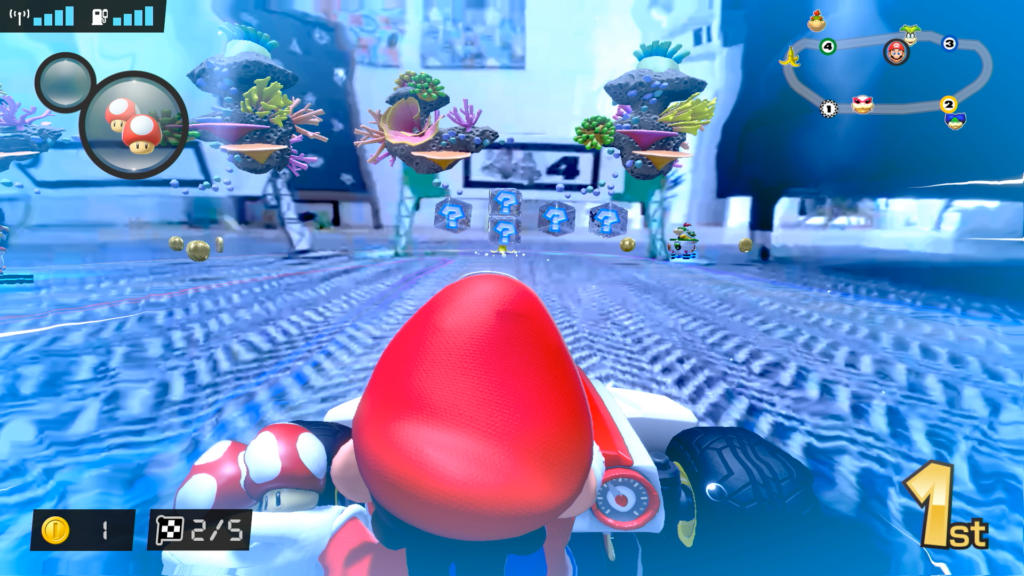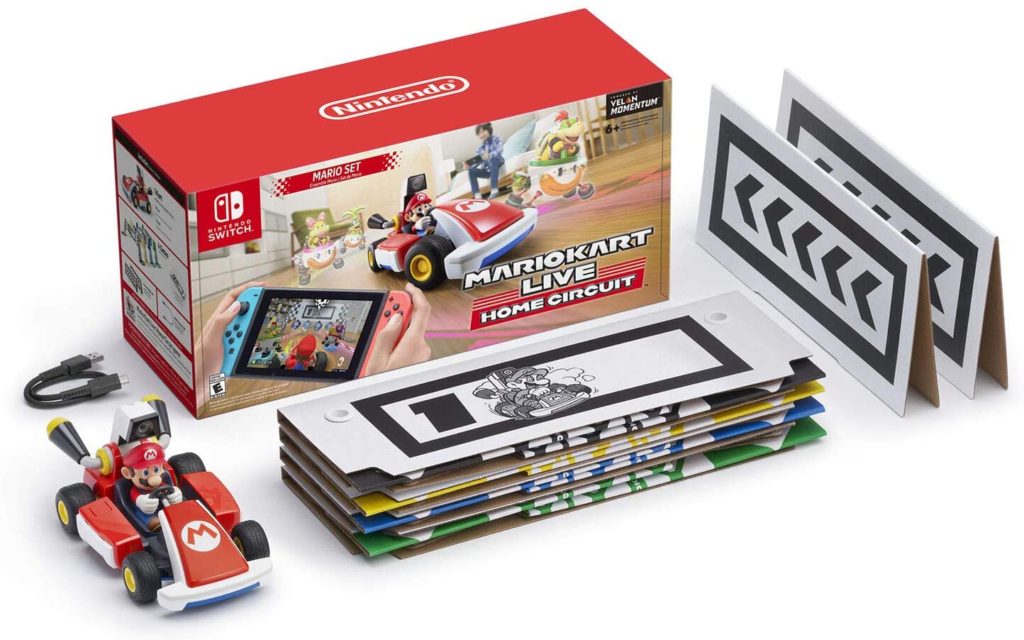
I’ve played video games with epic villains before. I’ve faced down titans, demons, and Gods. But nothing had prepared me for the monstrosity that awaited me for this review.
It towered over my character, chasing me down relentlessly with a seemingly endless reserve of energy. If it caught up to me — and I couldn’t outrun it, no chance. It would topple me over, or threaten to tear me to shreds. The only thing that could stop it from its murderous intent was a good scratch behind the ears, or maybe a little piece of hamburger. The villain in question is, of course, my very good dog Holly. And the game is Mario Kart Live: Home Circuit, the perfectly charming yet (charmingly) imperfect AR game from Nintendo.
Unless you’re a die-hard Pikman fan, Mario Kart Live: Home Circuit is arguably the marquee holiday offering from Nintendo this year. It’s a tall order in a season that sees new consoles arriving from both Sony and Microsoft.
That being said, while it’s not quite as groundbreaking as a next-gen console, Home Circuit still brings a fresh experience to the Switch. The concept of a real-world playable Mario Kart circuit is such an obvious home run, and it’s hard not to be won over by the sheer burst of adrenaline you get driving your Kart around for the first time. But that novelty wears off quickly, and once it does, you’re left with something that might better function as exercise for your dog than a game in your regular rotation.
Home Circuit’s core gimmick is a miniature real-life Mario Kart — with Mario or Luigi inside! — equipped with an AR Camera that uses a series of rearrangeable cardboard gates to create drive-able courses right in your home. Using the Nintendo Switch as a controller, you maneuver the Kart through your placed gates, which the game then recognizes as a course. At that point, you can race your course against AI characters in a Grand Prix mode, or take yourself on in a Time Trial mode. As you play and earn coins, you can unlock different costumes for Mario, karts to race in, or customizations for the course itself like speed boosts or Bowser’s castle-style flame wheels. It’s a simple system that should be familiar to any Mario Kart fans, or easy to pick up for anyone who is not.

The core draw of the game, and the part that will most readily capture your heart, is the brain-expanding opportunities that start to arise when Mario Kart enters the real world. Immediately upon opening the box, my brain started looking around my home not as a house, but as a series of increasingly dare-devilish obstacles to overcome. Could the cart fit under our couch? (Yes.) Could I use this squishy pillow as a ramp-up these stairs? (Hahaha, no. Dummy.)
As I sped Mario through a hellish nightmare of my own devising, throwing hairpin corners around chairs and speeding through sofa tunnels, I felt the deep sense of satisfaction that comes from consuming something you’ve made, a rare sensation that’s found more readily in, let’s say, eating a fresh-baked cookie than playing a video game. Freeze that sensation in time and Home Circuit is a marvel, a game that will elicit childlike joy in adults and regular joy in children. Unfortunately, the game itself rarely returns to that zenith.

Home Circuit’s biggest shortfalls come when you begin to, inevitably, compare it to Mario Kart proper. Avoid it all you want, drive as fast and far as possible, but those comparisons will arise, and they are often not favorable. The Mario Kart games have become iconic for their speed, their style, and their execution — each one is smoother and more vibrant than the last. In its defense, Home Circuit does go out of its way to recreate some of this magic: the Grand Prix courses bring in on-screen touches like underwater effects, courses littered by Goombas and Freezees that trap your kart in a block of ice, and you can even race on the always-necessary Rainbow Road.
But Home Circuit itself, as much as it is freed by the real world, is also limited by it. While the Kart handles well, the relatively tame pace at which it zooms around the room feels like a far cry from the speed at which you fly across the normal game. The Kart can’t handle terrain or inclines very well, meaning that as creative as you get the courses will remain generally linear and flat. And the camera itself is a touch washed out, making the real world feel a little gray and lifeless — again, a step down from the technicolor parade of the core game.

That is, of course, when you can look at the screen. I found that the business of the screen and the franticness of the course actually made it easier to maneuver by watching the Kart in real-time rather than watching my Switch. Its saving grace would be if it was easy to play and race with friends, but unfortunately, there is no local multiplayer without a second Switch and Kart: and with the system costing $300 and the game running $100, you’re talking a $400 investment just for a friend to join in. The idea is strong — so very strong. But the execution falls just a bit short.
Mario Kart Live: Home Circuit is the latest example of Nintendo constantly working to redefine itself and flex its innovative muscles — and in many ways, it works! The PS5 and Xbox Series X are poised to be technical computing behemoths, but no company experiments as readily and successfully with how you play its games as Nintendo does. That being said, while Home Circuit should certainly be in the running to excite many children, annoy many parents, and torture many canines this holiday season, the game built around the core idea still needs some fine-tuning before it’s ready to hit the Grand Prix.
